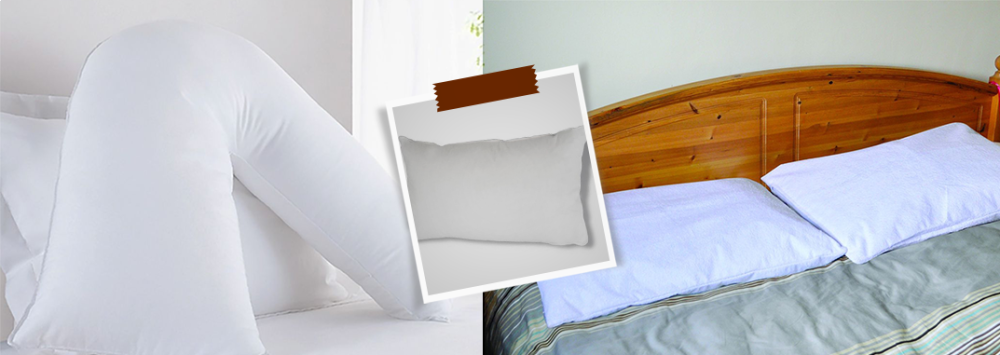
Hitting the Sack in Later Years
Sally Madeley-Carr, OT30 Mar 2022
Quality sleep makes for a quality day, so searching for the right mattress and bed pillow is worth the effort. Bear in mind that one mattress or pillow does not fit all, as we all find sleep in our own personally chosen positions.
Restful Sleep
The freshness of a young person or young adult's body can quickly pull itself out of a less than comfortable sleep. The older person's body needs more assurance of quality sleep, to support a happy and ache-free day.
The human frame does not lend itself to lying completely flat. For the person who sleeps on their back, the neck area is short of support, as it may rest several inches above the mattress.
For the person who sleeps on their side, the gap between the shoulder and head is even greater.
For the person who sleeps on their front, the head rests twisted to one side, to allow for breathing.
People find restful sleep in many different sleeping positions, including curled up like a ball, as well as with legs raised and bending at the knees.
Restful sleep means finding a mattress and bed pillow which will fill the spaces created by the sleeping position adopted.
Mattresses
There are many types of mattresses including memory foam, innerspring, latex, airbed and hybrid.
Mattresses can range from soft to hard and firm.
Your preferred sleeping position may indicate that one type of mattress will prove the best for you.
Sleeping on Your Back
A firm mattress is a good choice for a back sleeper, as it provides even and stable support. The firmness allows the pressure of the body to be evenly distributed.
Sleeping on Your Side
A side sleeper will benefit from a soft to medium mattress, as the unevenness of the body on the side will be able to sink into the 'softer' mattress. A harder mattress may cause your arm to go numb from the pressure it takes.
Memory foam is a really good choice for side sleepers, as the curvature of the body can sink into it and thus give a high level of pressure relief. Those of heavier build may opt for a firmer mattress, which will still allow them to sink into it.
Sleeping on Your Front
A medium or firm mattress is best for front sleepers, as it helps maintain the alignment of the spine. Sinking into a softer mattress could promote back pain, by causing your spine to curve.
The Overall Best Position for Quality Sleep
It is believed that sleeping on your side or back will give better quality sleep, as the support given reduces the pressure on spinal tissue muscles and allows your muscles to feel more relaxed.
The Worst Sleeping Position
The worst sleeping position is being curled up like a ball whilst on your side, with knees brought up towards the face and the head curled down. This position can restrict breathing and also bring on neck and back pain.
Pillows - How They Contribute to Blissful Sleep
Once the best sleeping position is established, the right filling and right shape bed pillow can make the difference between sleep and restful sleep.
Bed pillows are not only for the head but can support the body at other points too.
Front sleepers may require no pillow, as sleeping on one's front allows a lower angle of the neck, which means that the neck is in better spinal alignment with the rest of the spine.
For back and side sleepers, sleeping without a pillow could lead to snoring and other sleep disturbances, as well as to headaches, neck pain and back ache.
Choosing Well
When we talk about pillows, we need to think about pillow loft - the height which a pillow provides you with when it is compressed. Getting the right pillow loft / pillow height (e.g. 4 to 5 inches / 10 to 13 cms.) will help give you the support needed when you are in repose. The correct height will not make your neck turn in or turn out but will keep your spine fully aligned.
Back sleepers will benefit from a pillow which offers medium to firm support, as this firmness will keep the head and also the neck in line with the spine.
The head of a side sleeper will be even higher from the mattress, so the perfect pillow will be high loft, with a height of between five and seven inches. A medium firmness pillow will cushion the head and help keep the spine aligned.
With their head resting fully on the pillow, a front sleeper will need only a thin loft of around 3 inches, or no pillow at all, as the head will need only minimal height to align with the spine.
For the person who changes position during the night, latex or shredded memory foam bed pillows are mouldable and so can cope with changes during sleep.
Pillow Fillings
The most common filling tends to be polyester, a soft pillow which raises your head slightly. Pillows can also be filled with cotton, wool, memory foam, latex, microbeads, feathers, down, water, gel, inner springs and other materials.
Cotton pillows may prove to be thin but are a good choice for people who have allergies. Be aware that, over time, the pillow may absorb sweat and will show signs of mildew.
Wool pillows are soft and fluffy. They are a little more expensive to buy and must be dry-cleaned only.
Memory foam pillows create a contour when laid on and so give really good support to the head and neck. The memory foam adjusts quickly to movement and so gives constant, tailored support. These pillows come with shredded foam, or as block foam.
Latex pillows are available in both shredded and block latex. A bed pillow made from natural latex is biodegradable and eco-friendly. If you are allergic to latex, a memory foam pillow will be the next best choice.
Latex offers excellent pressure relief and is resistant to mould, mildew and dust mites.
As named, microbead bed pillows are filled with microbeads and make contouring a simple task. Microbeads are cooling but not eco-friendly.
Feather pillows are not soft, though they are durable and supportive. Feathers tend to come from ducks or geese. As feathers tend to clump together, these pillows need to be fluffed up occasionally.
The material for down bed pillows comes from the underbelly of ducks and geese and so the material is much finer. Down is not hypoallergenic and a down alternative comes in the form of polyester. The alternative is not as warm or as durable as down but is less expensive, mouldable and easy to look after.
The support given by a water pillow depends on how much water you put in the pillow. This type of pillow is quite firm and doesn't contour satisfactorily.
A gel pillow will also contain some other material; most commonly, memory foam. This cool type of pillow is firm and hypoallergenic. The cool sensation can relieve neck pain and also help reduce pressure.
An innerspring pillow will also contain memory foam or polyester as its outer layer. The inner springs allow a good through flow of air and so help you keep cool.
Pillow Sizes
Bed pillows come in a range of sizes, including:
- Standard - 20 inches x 26 inches (51cms. x 66 cms.).
- Super standard - 20 inches x 28 inches (51 cms. x 71 cms.).
- Queen - 20 inches x 30 inches (51 cms. x 76 cm.).
Standard, super standard and queen all fit snugly into a standard pillowcase (20 to 21 inches x 30 to 32 inches (51 to 53 cms. x 76 to 81 cms.).
- King - 20 inches x 36 inches (51 cms. x 92 cms.).
King-size waterproof pillows need pillowcases measuring 20 to 21 inches x 36 to 41 inches (51 to 53 cms. x 92 to 105 cms.).
- Body - 20 inches x 54 inches (51 cms. x 137 cms.).
A specific pillowcase will be needed for body pillows.
The longer king pillow is a good choice for people who toss and turn when asleep. The extra length is good for lumbar support and ideal if placed behind you when you're sitting up to read, or to watch the television.
A body pillow can curve to adjust to the shape of your body and can give good support to side sleepers.
Pillow Shape
Today's pillows are not always oblong and come as:
- A wedge pillow (the same shape as a wedge of cheese) is an ideal choice for a back sleeper. Sleeping with the upper body ever so slightly raised improves blood flow and can reduce pressure on the lumbar spine. The wedge pillow can also be placed under the legs, the slight incline helping prevent blood pooling in the legs.
- Cervical (rounded) bed pillows are used to reduce neck and shoulder pain. Placed round your neck, it holds your head and neck in place and can minimise pain and stiffness.
- Contour pillows are wavy in shape, arched under the neck and also above the head. This bed pillow is highly recommended by chiropractors, as the support to the neck promotes a neutral spine.
Summary
The human form is irregular in shape and so care and thought should be given to finding the right mattress and bed pillow to give maximum support during sleep.
Decide which sleeping position works for you and then purchase accordingly.
Soft may give the thought of comfort but may fall well short of supporting your body when you are lying down.
Seniority brings with it a need to tick all of the boxes as to appropriate mattresses and bed pillows, to ensure quality sleep.

Sally Madeley-Carr, OT
Sally qualified as an Occupational Therapist in 1996 and is a well-respected professional in the field of rehabilitation equipment and living aids. She has worked in private practice and within the NHS, developing a broad experience with adults and children. Click here for Sally's registration with the Health and Care Professions Council. The HCPC regulates health, psychological and social work professionals in the UK.